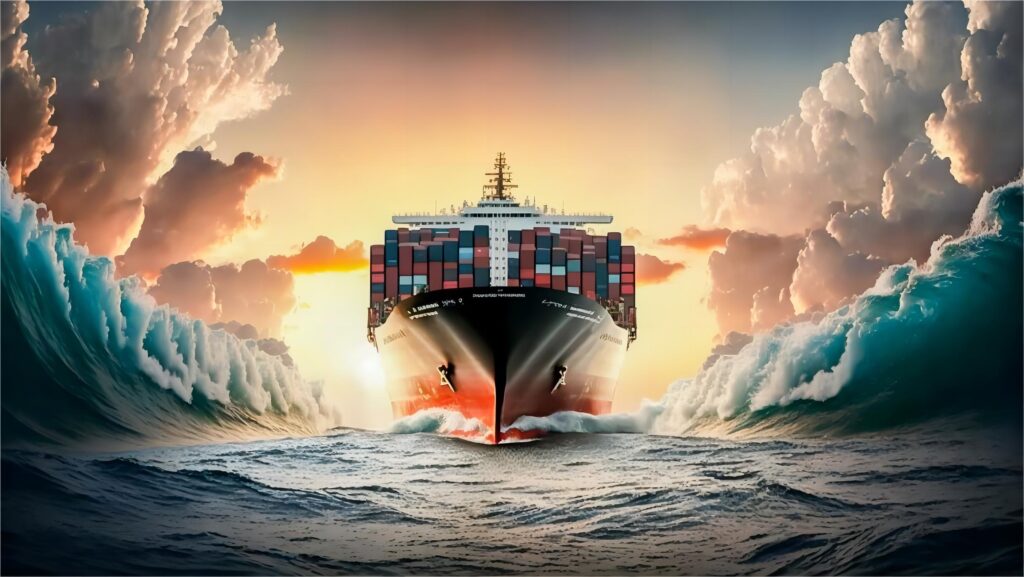- By TOP CHINA FREIGHT
- July 16, 2025
- Shipping
The Complete Guide to Ocean Freight from China to England
Ocean shipping is the most cost-effective and scalable method for moving goods from China to England, especially for large volumes. With global trade routes well-established between Chinese manufacturing hubs and UK ports, businesses benefit from competitive rates, reliable schedules, and comprehensive logistics support.
Whether you’re importing electronics, textiles, industrial equipment, or furniture, here’s why ocean freight is the smart choice.

1. Cost-Effective for Bulk Cargo
Ocean freight is by far the most economical shipping method for large-volume or heavy goods. While air freight may deliver faster, its cost per kilogram is significantly higher. Ocean freight allows businesses to maximize shipping volume while keeping logistics budgets under control.
Typical cost ranges (as of 2024–2025):
The cost of ocean freight depends on the cargo volume, container size, shipping method, and origin/destination ports. Below is an estimated price range:
| Shipping Mode | Estimated Cost (USD) |
|---|---|
| LCL (Less than Container Load) | $50–$100 per CBM |
| FCL 20-foot Container | $1,500 – $2,800 |
| FCL 40-foot Container | $2,500 – $4,200 |
| Customs Clearance (China + UK) | $150–$300 per shipment |
| Door-to-Door Delivery | Additional (quoted based on postcode) |
Note: Rates vary by season, fuel surcharge, carrier, and shipping terms (FOB, EXW, DDP, etc.)
2. Flexible Container Options
Whether you’re a small business or an enterprise, ocean shipping offers solutions tailored to your needs:
- FCL (Full Container Load): Exclusive use of a 20ft or 40ft container for bulk or high-volume cargo.
- LCL (Less-than-Container Load): Share a container and pay only for the space you use—ideal for smaller shipments.
- Reefer, Open-Top, Flat Rack Containers: For special goods like perishables, oversized machinery, or sensitive equipment.
3. Extensive Port Coverage
Ocean freight from China to England typically follows the Far East–Europe shipping lane, passing through key strategic waterways.
| Route Segment | Details |
|---|---|
| Departure Ports (China) | Shanghai, Ningbo, Shenzhen, Qingdao, Xiamen, Tianjin |
| Transit Waterways | South China Sea ➜ Strait of Malacca ➜ Indian Ocean ➜ Suez Canal ➜ Mediterranean ➜ English Channel |
| Arrival Ports (England) | Felixstowe, Southampton, London Gateway |
| Transit Time | 25–40 days depending on route and service type (direct vs transshipment) |
4. End-to-End Logistics Support
To streamline your shipment, freight forwarders offer door-to-door and port-to-port logistics solutions covering every stage of the journey:
| Logistics Stage | Services Provided |
|---|---|
| Supplier Pickup | Trucking from the Chinese factory to the export port |
| Export Customs Clearance | Documentation, declarations, inspection (if needed) |
| Ocean Freight Arrangement | FCL or LCL booking, carrier selection, sailing schedule management |
| Container Handling & Loading | Stuffing at warehouse or factory, port handling fees |
| Sea Transit | Real-time vessel tracking and shipping updates |
| UK Import Clearance | HMRC customs processing, VAT & duty management, import license assistance |
| Last-Mile Delivery | Road freight to final destination in the UK (warehouse, distribution center, etc.) |
5. Sustainable & Scalable Shipping
Ocean shipping is significantly more energy-efficient than air freight, making it the more environmentally responsible choice. For businesses aiming to lower their carbon footprint while still moving large volumes, sea freight is the most sustainable solution.
And thanks to increasing automation at ports and smart logistics systems, ocean shipping is now faster and more flexible than ever before.
Need a Shipping Quote?
Click below to get a free, no-obligation quote from TJ China Freight.
We’ll respond within 24 hours with the best shipping options for your cargo.
FAQ
Is ocean freight cheaper than air freight?
Yes. Ocean shipping is 3 to 5 times cheaper than air freight and is the preferred option for heavy or bulk goods.
How long is a boat trip from China to England?
A typical boat trip (ocean freight) from China to England takes around 25 to 40 days, depending on the following factors:
- Departure and arrival ports (e.g., Shanghai to Felixstowe vs. Shenzhen to Southampton)
- Shipping route (direct vs. transshipment)
- Carrier schedule and frequency
- Customs clearance delays or port congestion
Example:
Shanghai ➜ Suez Canal ➜ Felixstowe = ~30–35 days on average.
